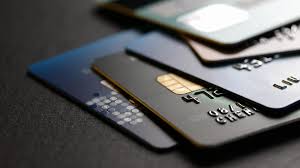Dark Deals: Exploring Fresh Finds in Credit Card Shops

The dark web has become an underground hub for cybercriminals seeking to buy, sell, and trade illegal goods. Among the most sought-after commodities are stolen credit card details, which fuel a hidden economy of fraud and vclubshop identity theft. Termed “credit card shops” on the dark web, these marketplaces operate with a level of professionalism that rivals legitimate online platforms. In this blog, we explore the world of dark deals and the fresh finds that cybercriminals pursue in these illicit credit card shops.
Understanding Credit Card Shops on the Dark Web
Credit card shops are marketplaces where stolen financial information is bought and sold. The term “shop” may be misleading, as these platforms are far from legal; they function under the radar of law enforcement and are accessible only through secure, anonymous networks like Tor.
These shops are organized in a way that makes it easy for buyers to locate specific types of stolen data. Listings often include details such as card type, issuing bank, country of origin, and available balance. Some even provide verification, ensuring that the data works as promised. The presence of fresh finds—recently stolen credit cards—is particularly important, as older data is more likely to be flagged or deactivated by financial institutions.
How Fresh Finds Work
Fresh finds in credit card shops refer to newly obtained or recently leaked financial information. Cybercriminals value fresh data for several reasons:
- Higher Reliability
Freshly obtained credit card information is less likely to have been blocked or reported stolen, increasing the chances of successful fraudulent transactions. - Premium Pricing
Due to its usability, fresh data often commands a higher price compared to older or recycled information. Buyers are willing to pay more for the assurance that the data is valid. - Targeted Operations
Fresh finds allow cybercriminals to target high-value accounts or specific regions, depending on the card information available. This targeted approach maximizes profits and reduces the risk of failure.
Dark web marketplaces often label their listings with terms like “fresh,” “verified,” or “hot,” signaling that the data is newly acquired and ready for immediate use.
The Mechanics of Dark Deals
Credit card shops on the dark web operate in ways that closely mirror legitimate e-commerce platforms. Understanding vclubshop login these mechanics sheds light on how cybercriminals maintain trust and efficiency in a world built on anonymity.
1. Registration and Access
Access to credit card shops is restricted. Users often need invitations or referrals to create accounts. Some platforms require a cryptocurrency deposit to verify seriousness. This exclusivity ensures that casual visitors and law enforcement agents are kept out.
2. Cryptocurrency Transactions
All transactions are conducted in cryptocurrency, such as Bitcoin or Monero. These digital currencies provide a degree of anonymity that traditional banking systems cannot. Some shops even employ mixing services to further obscure the origin of funds, making it difficult to trace payments back to buyers or sellers.
3. Listings and Categories
Credit card shops categorize stolen data by card type, country, bank, and balance. This organizational structure allows buyers to quickly locate the data they need. Fresh finds are typically highlighted, signaling their recent acquisition and higher reliability.
4. Escrow Services
To reduce the risk of scams, many dark web shops use escrow services. Payments are held by the platform until the buyer confirms that the purchased data works as advertised. This system fosters trust within an otherwise highly illegal environment.
5. User Ratings and Reviews
Even in illegal marketplaces, customer feedback matters. Buyers can rate sellers and leave reviews based on the accuracy and usability of the stolen data. High-rated sellers attract more buyers, creating an incentive for quality control.
Risks Associated with Credit Card Shops
The existence of these marketplaces poses serious risks to individuals, businesses, and global financial systems.
1. Identity Theft
Freshly stolen credit card information can be combined with other personal data to create fraudulent identities. Cybercriminals can use this information to open accounts, make unauthorized purchases, or even commit more elaborate scams.
2. Financial Loss
Victims of credit card theft often face unauthorized charges and potential depletion of funds. While banks may reimburse some losses, the process can be stressful, time-consuming, and damaging to credit scores.
3. Corporate Exposure
Data breaches that supply credit card shops can have severe consequences for companies. Beyond immediate financial loss, organizations risk reputational damage, legal liability, and regulatory penalties.
4. Growth of Cybercrime Networks
Credit card shops are often linked to larger cybercriminal networks. Profits from these marketplaces can fund further illegal activities, including phishing, ransomware attacks, and money laundering. The cycle of crime is reinforced, perpetuating ongoing risks for society at large.
Law Enforcement Efforts
Law enforcement agencies worldwide, including Europol, Interpol, and the FBI, have made significant strides in dismantling dark web marketplaces. Operations against platforms like Silk Road, AlphaBay, and Hydra demonstrate the possibility of intervention. However, credit card shops continue to emerge and adapt, often moving to more secure networks or using advanced encryption to evade detection.
The persistence of these shops highlights the challenges of policing the dark web. While some marketplaces are shut down, operators often resurface under new names or improve their security infrastructure to avoid capture.
Protecting Yourself Against Dark Deals
Although individuals cannot prevent all cybercrime, proactive steps can reduce risk and mitigate damage if personal information is compromised:
- Monitor Accounts Regularly – Checking bank statements and credit card activity helps detect unauthorized transactions early.
- Use Strong, Unique Passwords – Avoid using the same passwords across multiple accounts to reduce vulnerability.
- Enable Two-Factor Authentication – 2FA adds an extra layer of security, making unauthorized access more difficult.
- Be Wary of Phishing Attempts – Cybercriminals often use phishing to gather additional personal information.
- Consider Identity Theft Protection Services – These services monitor for compromised data and can provide assistance if information appears on dark web marketplaces.
The Broader Implications
The rise of credit card shops and fresh finds highlights the increasing sophistication of cybercrime. These platforms mimic legitimate e-commerce operations, including customer service, escrow systems, and user ratings, demonstrating that even illegal markets can operate with professionalism.
For businesses and individuals alike, these developments emphasize the importance of cybersecurity vigilance. Companies must invest in robust security systems, regular monitoring, and employee training to prevent data breaches. Individuals must adopt good security habits and stay informed about emerging threats.
Conclusion
Credit card shops on the dark web, with their fresh finds and professional operations, represent a hidden economy with real-world consequences. Platforms that facilitate the sale of stolen financial data fuel identity theft, financial loss, and organized cybercrime networks.
Awareness, vigilance, and proactive security measures are essential to protect against these dark deals. Regular account monitoring, strong passwords, two-factor authentication, and identity protection services are key steps individuals can take to safeguard themselves. For businesses, investing in cybersecurity and training employees is crucial to minimizing exposure to data breaches.
Ultimately, the emergence of fresh finds in credit card shops serves as a stark reminder that the digital world, while convenient and interconnected, contains hidden dangers. Staying informed and prepared is the best defense against the persistent threats of the dark web.



